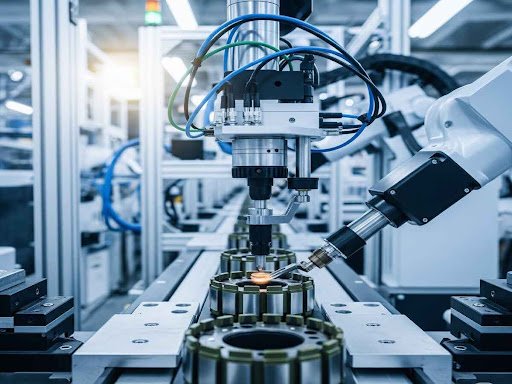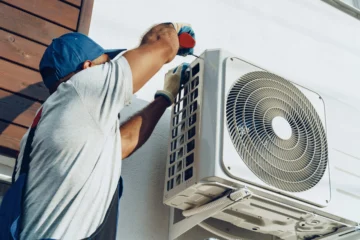Managing quality control in stator production is essential for ensuring reliability, safety, and long-term performance in electric motors and generators. A stator’s ability to generate a stable magnetic field depends on precise manufacturing practices at every stage. Without strong quality controls, minor flaws can result in product failures or inefficiencies. Manufacturers must therefore maintain strict oversight throughout the process.
Effective quality control requires clear procedures, thorough inspection, and coordination across departments on the stator production line. Each stage, from raw material inspection to final testing, must meet defined standards to ensure consistency. Prevention of defects should always take precedence over correction. This article explains the major components of quality management on a stator production line.
Understanding the Stator
The stator is the stationary part of an electric motor or generator that contains coils or windings to produce a magnetic field. These windings interact with the rotor to create motion, making the stator essential for operation. Stators are built with laminated steel cores and tightly wound copper wires. Each element must be manufactured to exact tolerances.
Any defect in the stator can compromise the function of the entire machine. Poor insulation, incorrect winding, or misaligned laminations can lead to overheating or mechanical failure. Understanding these technical details helps engineers design better quality control systems. A well-informed team can prevent issues before they begin. Below are the steps for managing Quality Control on a Stator Production Line.
1. Raw Material Inspection
The first step in ensuring quality begins with inspecting all incoming raw materials. Laminated steel sheets, copper wires, and insulation must be checked for thickness, strength, and electrical properties. Materials that do not meet specifications are immediately rejected. This step prevents flaws from entering the production line.
In addition to visual checks, manufacturers often perform lab tests to verify supplier certifications. Only materials with consistent properties should proceed to the next stage. This initial inspection creates a solid foundation for the rest of the process. Quality inputs are essential for quality outputs in stator production.
2. Process Standardization
Standardizing each process on the production line reduces variability and ensures repeatability. Written procedures describe every step, from winding to insulation to assembly. When all workers follow the same method, the chance of error is minimized. This consistency leads to more predictable results and better quality.
Standard operating procedures should be reviewed regularly to reflect improvements. Process control documents also support training and troubleshooting. When a defect appears, teams can trace the issue to a specific step. Standardization creates a stable workflow where deviations are easier to detect and correct.
3. In-Process Monitoring
Monitoring production in real time helps detect problems before they grow into major defects. Automated sensors and inspection tools measure key variables such as coil tension, winding alignment, and curing temperature. These systems alert workers when something falls outside acceptable limits. Quick response prevents defective units from advancing.
In-process data is valuable for identifying trends and optimizing performance. Over time, engineers can use this information to adjust machine settings or refine procedures. Monitoring does more than catch errors; it also helps improve future production. Continuous observation keeps the process under control at all times.
4. Operator Training
A well-trained workforce is essential for maintaining quality standards. Workers must understand not only how to perform tasks but also why quality matters at each stage. Training programs should include technical skills, safety protocols, and defect recognition. Experienced operators are more likely to detect subtle issues.
Regular training sessions reinforce best practices and update employees on new procedures or tools. Skilled operators contribute to a culture of responsibility and attention to detail. When people know what to look for and how to respond, quality improves. Proper training reduces mistakes and strengthens the entire process.
5. Machine Calibration
Machines used for winding, cutting, or curing must be calibrated regularly to maintain accuracy. Even slight misalignments or wear can result in poor winding distribution or insulation gaps. Calibration ensures that machines perform as expected within narrow tolerances. This step is crucial for consistent production.
A detailed calibration schedule and maintenance log should be maintained for each machine. Verification tools help ensure accuracy and identify problems early. When machines are in perfect condition, defects caused by mechanical errors are significantly reduced. Precision at the equipment level supports precision in the product.
6. Visual Inspections
Despite automation, visual inspections remain an important quality control step. Trained inspectors check for physical defects such as wire damage, insulation cracks, or misaligned parts. These issues may not trigger sensors but can still affect performance or appearance. Human oversight adds another layer of safety.
To be effective, inspections must follow clear criteria and be performed at regular points in production. Lighting, magnification, and checklists can improve accuracy. Workers involved in visual inspection should receive specialized training. When combined with other methods, visual checks improve the chances of detecting faults early.
7. Functional Testing
Functional tests verify that the stator performs correctly under electrical conditions. These include resistance measurements, insulation resistance, and high-voltage breakdown tests. The goal is to simulate actual working environments and catch problems that might not be visible. Each stator must pass these tests before it is approved.
Testing should follow strict guidelines and be done with calibrated instruments. If a unit fails, it must be isolated for further inspection and analysis. This final stage of performance testing ensures the product meets all customer and regulatory expectations. It confirms that the stator is ready for real-world use.
8. Statistical Quality Control
Statistical tools help manage process variation and identify trends before defects occur. Control charts, process capability studies, and sampling plans allow manufacturers to monitor quality using real data. These tools turn quality from a subjective goal into a measurable outcome. Engineers can detect and address process drift early.
Statistical quality control supports decision-making based on evidence rather than intuition. It helps balance efficiency with quality by pinpointing problem areas without inspecting every unit. These techniques also make continuous improvement easier. Data-driven methods ensure the production process stays within acceptable limits.
9. Root Cause Analysis
When a defect is discovered, finding the underlying cause is essential for preventing recurrence. Root cause analysis uses structured methods such as the five whys or cause-and-effect diagrams. These tools help identify the real issue rather than just treating the symptom. A lasting fix depends on understanding the source.
Corrective actions must be implemented, verified, and documented. Without this step, the same issue may continue to appear. Root cause analysis encourages a deeper understanding of both product and process. Over time, this reduces error rates and builds a stronger quality system. Each failure becomes a learning opportunity.
10. Documentation Control
Maintaining accurate records supports traceability and process consistency. Every inspection result, test report, and calibration log must be documented and stored securely. Controlled documents ensure that workers follow the correct version of procedures. This improves coordination and reduces confusion.
Documentation is also vital for audits and certifications. When records are well organized, responses to customer inquiries or quality reviews are faster. Digital systems can simplify document control and make updates easier. A robust documentation system is the backbone of any mature quality control program.
11. Supplier Quality Assurance
Suppliers play a crucial role in product quality, so they must be held to high standards. This includes verifying their certifications, inspecting their materials, and conducting regular audits. A formal supplier quality assurance program reduces the risk of nonconforming materials entering production. It promotes consistency and reliability.
Partnership with suppliers should focus on collaboration and continuous improvement. Feedback and performance tracking help build stronger relationships and encourage accountability. When suppliers understand expectations clearly, quality improves across the board. A good supplier is not just a vendor but an extension of the production team.
12. Final Quality Audit
The final quality audit is the last step before the stator is shipped to the customer. It confirms that all previous checks have been completed and that the unit meets specifications. The audit includes visual inspections, dimensional checks, and review of test results. No product should leave the factory without passing this stage.
This audit serves as a final safety net to catch overlooked issues. It also reinforces a culture of accountability and attention to detail. Results are documented for traceability and future analysis. A strong final audit process protects the company’s reputation and ensures that customers receive reliable products.
Elite Stator Winding Makers
Honest Automation is a leading manufacturer specializing in high-quality stator winding solutions for a wide range of applications. Known for precision, reliability, and innovation, the company integrates advanced automation with expert engineering to deliver products that meet the highest industry standards. As one of the foremost stator winding machine manufacturers, Honest Automation carefully controls every step from raw material selection to final inspections to ensure consistent quality.
Serving clients across global markets, Honest Automation supports multiple industries. The company’s focus on durability, efficiency, and customer satisfaction has earned it a strong reputation among manufacturers worldwide. With a commitment to continuous improvement, Honest Automation remains a trusted partner for those seeking dependable stator winding technologies.
To learn more or inquire about custom solutions, please contact the Honest Automation team using the details below:
Bottom Lines
Managing quality control on a stator production line involves discipline, coordination, and continuous attention to detail. Every step, from raw material inspection to final testing, must align with clear standards and expectations. Quality is not something achieved by chance. It requires constant monitoring and improvement.
By implementing process controls, training staff, and using data to guide decisions, manufacturers can produce high-performing stators consistently. Each element of the quality system supports the others in building trust and reducing risk. In the end, robust quality control is not just a goal but a responsibility to customers and industry standards.
Stay in touch to get more updates & alerts on Picnob! Thank you



